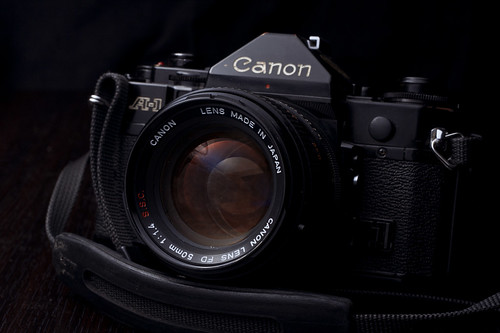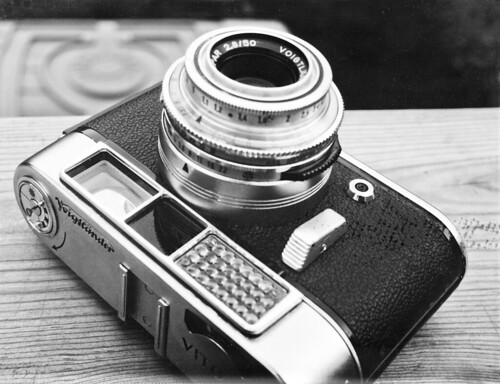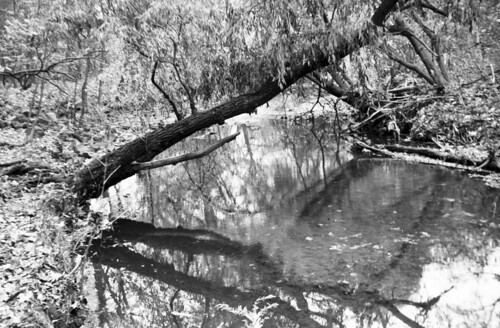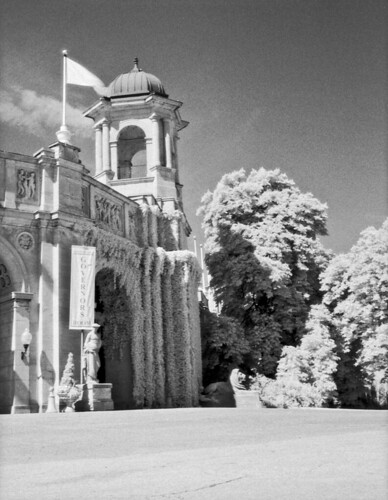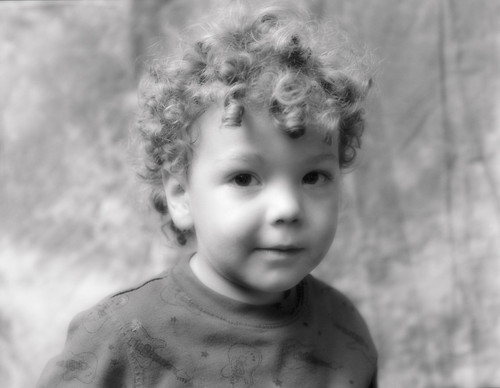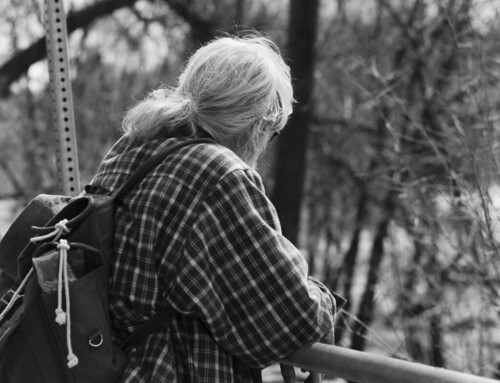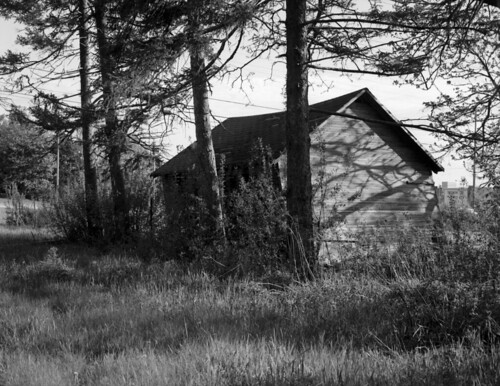The Spotmatic had a few refinements over the years. From the "Value" entry model, the SP500, with a top speed of 1/500s marked shutter speed, but a 1/1000s top shutter speed (unmarked). I know that sounds confusing, but the way Pentax made a value model was simply by changing the SP1000 speed dial to show 1/500s only.
I have two models. The SP, which was the original model released in 1964, and the updated model, which was the SPII. The difference between the SP and SPII was actually the addition of the Hot Shoe above the viewfinder. The original SP had a pair of Sync ports on the front only. FP Sync and X Sync. To use a on-camera flash, you would need to purchase a clip-on Accessory Shoe and plug the flash into the sync ports. Because of this, though, Pentax, with the Honeywell branding, added an On-Camera hotshoe. Thus adding the SPII to the marketplace.
As cameras became more and more sophisticated, soon the advent of open aperture metering starting to appear, instead of the Spotmatic's StopDOWN Metering. With M42 lenses, this required the lens to have 3 pins on it to make the electrical contact with the mount. There was only a handful of lenses to allow this, and as such, the idea was then abandoned by Pentax and moved on to a new mount.
The K Mount, which is a Pentax Spotmatic F with a new mount, no FP Sync, and open aperture metering using a K-Mount lens.
The Spotmatic name may have ended after the introduction of the K1000, but the innards and the camera was still the same. Mechanical shutter, 1.35v (1.5v on the K-1000) battery for the meter, and a top speed of 1/1000s.
The K-1000, when introduced, also had an offering for a M42 to K mount adapter, so that those that already had their M42 lenses, could then mount them onto the K-1000 for an easier transition.
The other noticeable difference between the K-1000 and the Spotmatic was the removal of the Self-Timer. After 12 years having the Self-Timer, Pentax removed the clockwork timer, in favor of a screw in accessory timer, which can be pricey, if you don't do your homework on finding a working one that is not at ripoff prices.
You can see the Helios 44/2 58mm ƒ/2 Zeiss Biotar copy lens affixed to the camera in this photo. The early model Helios 44/2 lenses were actually just rebadged Zeiss Biotars, since they used the Zeiss Glass while the supply for it lasted. Similar to the Zeiss Ikon Contax III cameras which were rebadged as Kiev III cameras.
The early Helios lenses are the highly sought after glass, but the "newer" lenses are excellent! Most of the original Helios 44/2 lenses were M39 mount for the Zenit M39 SLRs, not to be at all confused with M39 LTM Rangefinder cameras, which could not use M39 SLR Lenses except for MACRO photos.
The metering is controlled using an On-Off switch that uses STOP DOWN metering only. Most people would Focus, Stop-Down and Meter. Using a PRESET lens, like the Helios 44/2, the lens would need to be manually stopped down, while with other M42 AUTO lenses, it would stop down automatically when you turn on the meter, and when you actuate the shutter.
It was also a good way to get Depth of Field Preview, which the K-1000 was also lacking.
You can also see, which was later removed in the K-1000, the Sync Ports, which is the FP and X sync. The K-1000 had the sync port moved to the metal plate beside the viewfinder on the front of the camera.
Looking at the back of the camera with the back open you can see the very dependable horizontal travel cloth focal plane shutter.
I have no idea how many shutter actuations this model has gone through, but since 1964 to today, it has to have gone through a lot, and it still works. Perfect! The shutter was a little sluggish when I first bought it 4 years ago. Well, not really sluggish, but would release the second curtain a little early, causing banding on images using faster shutter speeds.
Needless to say, it has since corrected itself, and it is worked flawlessly.
The only problem, though, is that the camera's meter no longer functions. It has completely failed and will need to be recalibrated, especially to work with 1.5v Silver Oxide batteries.
 Like almost every single Pentax film camera I know, the winder, speed, release, and counter cluster all looks the same. The speed dial also has the ASA selection dial on it, which is adjusted by lifting the outer ring and turning like you're adjusting the speed of the shutter.
Like almost every single Pentax film camera I know, the winder, speed, release, and counter cluster all looks the same. The speed dial also has the ASA selection dial on it, which is adjusted by lifting the outer ring and turning like you're adjusting the speed of the shutter.Winding is a quick-action thumb advance lever which can be advanced in a single stroke, or in many small strokes.
The auto-reset counter is housed inside the winding arm with a window showing the current frame.
The shutter release button is a simple long-depress inside threaded shutter release button with a single-action release. Unlike newer cameras, the release button only controls the shutter release, and not the metering system, which is done by the switch.
Personally, I don't mind having to meter by flipping a switch, but it is quite simpler to meter and release the shutter with one button. But that will come in the 70s.
Honestly, this is a camera every photographer should have had to shoot with. I like the K-1000, absolutely, but find that the K-Mount doesn't have the versatility of the M42, nor the range of lenses. Plus, the prices of said lenses is skyrocketing with Pentax dSLRs able to use those old K lenses, and the M4/3s cameras.
This camera is simple, elegant, and very rugged. Solidly built, and requires no battery to operate, other than the meter.
Has a great shutter, and even the sound is lovely, bright and big viewfinder, and is fairly easy to focus with using the MATTE Fresnel screen. The center prism screen is very accurate, and would be even easier if it had a split-image rangefinder type screen, but it works.
Excellent camera, for anyone looking to get into photography, or go to a simpler camera. It is an amateur's camera, yes, but that doesn't mean it can't compliment a professional photographer's system. In fact it can easily fit in right beside a Nikon F3, or a Canon F-1. Heck, even a Hasselblad or a Bronica can be complimented with this camera giving a faster system for those candids instead.
Tech Specs;
Pentax Spotmatic SP/SPII
Frame Size: 24x36mm Full Frame
M42 Thread Mount
Stop-Down Metering using a TTL CdS cell powered with a 1.35v Mercury Cell
Horizontal Travel Cloth focal plane shutter 1s to 1/1000s +B 1/60s X-Sync & FP-Sync
Hot-shoe X-Sync added on SPII
Quick-Wind ratcheting Thumb Wind Advance lever
 |
| "Apples and Bananas" - Pentax Spotmatic SPII Carl Zeiss Jena Tessar 50mm ƒ/2.8 Polypan F 50ASA |
Stay tuned as I go in-depth with the Canon EOS Elan II
Until next time, keep those shutters firing!



































